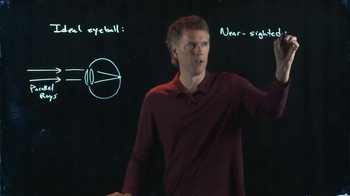33. Geometric Optics
Ray Diagrams For Lenses
Learn with other creators
Practice this topic
- Multiple Choice
If an object is placed within the focus of a converging lens (it's at a distance of less than the focal length), will a real image form? If so, does it form at a distance less than or greater than the focal length?
1015views1rank3comments - Multiple Choice
If an object is placed within the focus of a diverging lens (it's at a distance of less than the focal length), where will the image form? If so, does it form at a distance less than or greater than the focal length?
729views1comments - Multiple ChoiceAn object is in front of a diverging lens with focal length . Where is the image located?724views
- Multiple ChoiceA tall object is in front of a diverging lens with focal length . What is the height of the image and is it upright or inverted?752views
- Textbook Question
An object is 16.0 cm to the left of a lens. The lens forms an image 36.0 cm to the right of the lens. Draw a principal-ray diagram.
573views - Textbook Question
An object is 20 cm in front of a converging lens with a focal length of 10 cm. Use ray tracing to determine the location of the image. Is the upright or inverted?
52views - Textbook Question
A 1.0-cm-tall object is 60 cm in front of a diverging lens that has a −30 cm focal length. Use ray tracing to find the position and height of the image. To do this accurately, use a ruler or paper with a grid. Determine the image distance and image height by making measurements on your diagram.
46views - Textbook Question
(I) (a) What is the power of a 26.5-cm-focal-length lens? (b) What is the focal length of a -6.25 -D lens? Are these lenses converging or diverging?
633views
















